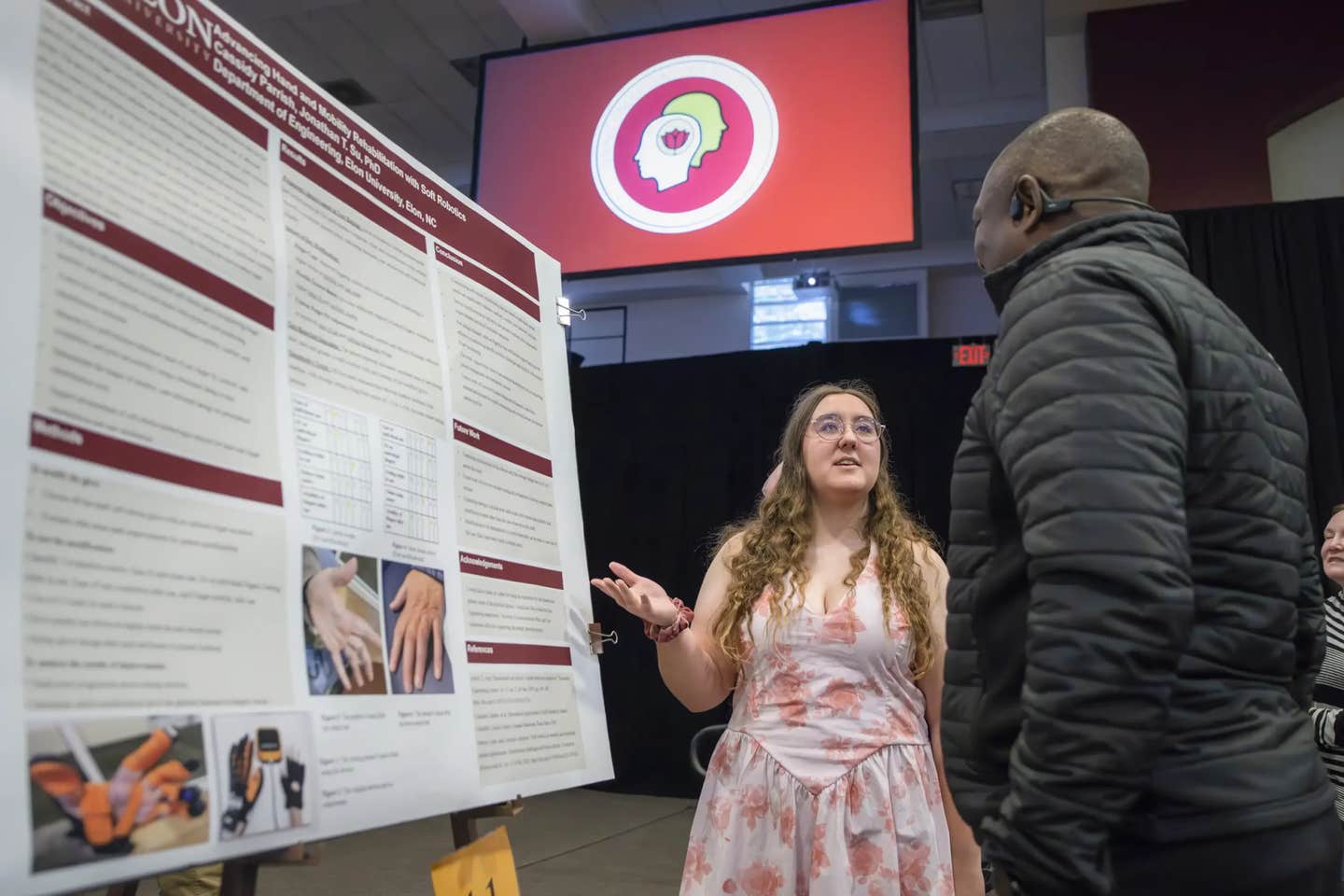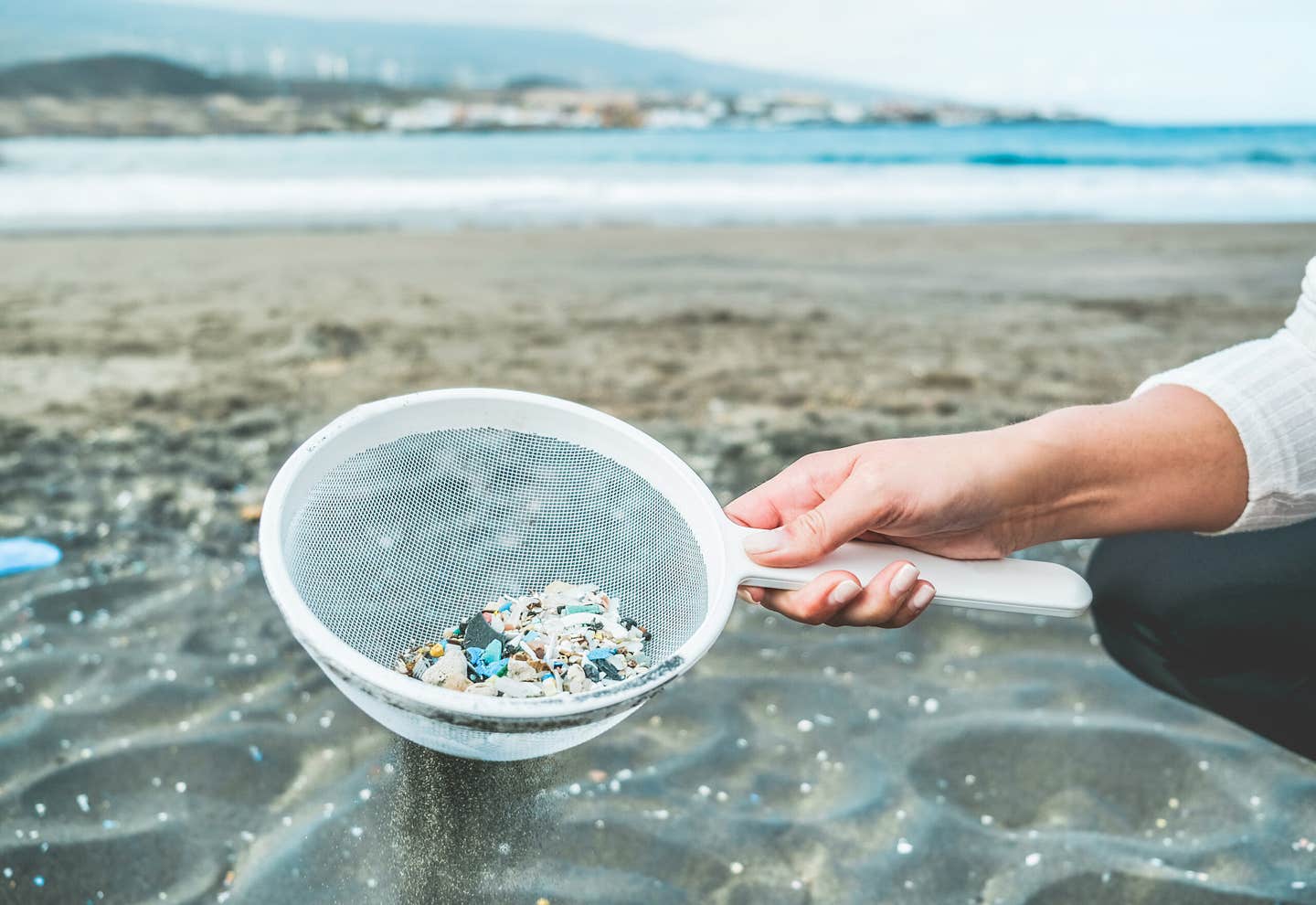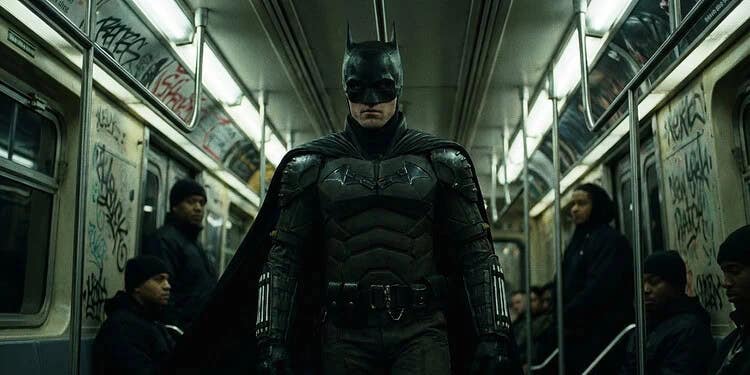Engineering major creates robotic glove for her dad’s hand pain
An engineering student designed a robotic glove for hand mobility, combining research and family ties to create a tool for better movement.

Student creates robotic glove for hand mobility, blending science and compassion to improve her father’s quality of life. (CREDIT: Elon University)
Cassidy Parrish had a problem to solve close to home. When her father’s hand pain grew worse, making everyday tasks like holding dishes nearly impossible, she set out to find a solution. For her, the project wasn’t just a class assignment. It was a chance to give her father back some independence.
A personal challenge turns into research
Parrish, a sophomore engineering major at Elon University, knew her father’s condition wasn’t improving on its own. His fingers often locked in place, leaving him unable to grip objects securely. “It’s gotten a lot worse as he’s gotten older to the point where his fingers are triggered in certain positions, so it’s made it difficult to hold things. He still wants to help with dishes but has broken a ton of casserole dishes just from it slipping out of his hands,” she explained with a laugh.
This challenge led her to partner with Jonathan Su, an associate professor of engineering. Together, they explored how soft robotics might help restore hand mobility. Their research uncovered a promising approach: a wearable robotic glove that uses inflatable chambers to help fingers bend and stretch.
How the robotic glove works
The glove they tested has flexible, finger-shaped components that can be placed directly over the hand. Air pressure inflates and deflates the segments, creating gentle movements that guide the fingers to open and close. This makes it easier for someone with limited mobility to maintain strength and flexibility.
Parrish noted that her father has already felt benefits from the device. “The device is helping a little bit, at least with some of that triggering because the biggest thing is if you don’t move it, you lose it,” she said. His doctor also confirmed that since he still experiences pain when stretching his fingers, there is potential for further recovery.
Research with heart and purpose
For Parrish, the project became more than just data collection. Her father’s support inspired her to keep working through the challenges. “He’s loved being part of this to help in any capacity that he can,” she said. “It really helped me keep my passion for it because I knew I’m working on this to help my dad.”
Related Stories
- Hand gestures make talking easier to follow, study finds
- First-ever bionic hand actually merges with user’s nervous and skeletal systems
The project also gave her the chance to step into the spotlight. Recently, she presented her findings at the Spring Undergraduate Research Forum, where hundreds of students share projects each year. It was her first time presenting research in this setting. “I’m excited to get to share it with others and just see what others have to say about it,” she said.
Inspiration from science fiction and family
Parrish’s interest in engineering started early. Growing up in Portsmouth, Virginia, she dreamed of working in a field that helped people. Movies and television also gave her sparks of inspiration. Pixar’s Big Hero 6 introduced her to the world of soft robotics, while Star Trek Voyager offered a powerful role model in B’Elanna Torres, the starship’s chief engineer.
“It was cool to see not only someone who was powerful and an engineer but also a woman in STEM,” she said. That mix of personal passion and fictional influence gave her the confidence to pursue engineering at the college level.
The project has also shown Parrish what she can achieve on her own. “It’s cool to see what you’re capable of on your own, that’s something I’ve always struggled with,” she said. She acknowledges the difficulty of studying engineering, especially in a male-dominated field, but says that tackling this challenge has helped her believe in her own skills.
Her role as a campus tour guide also gives her a chance to share her enthusiasm with future students. Now, she can point to her own research as proof that undergraduates can make real progress in solving problems. “Engineering is hard and going into a male-dominated field is hard too. So (I know) I am capable of doing this.”
The bigger picture of robotic therapy
Parrish’s work is part of a growing interest in wearable robotics for rehabilitation. Scientists and engineers around the world are studying how inflatable or motorized devices can help restore mobility after injury, stroke, or disease. Many designs use lightweight materials and programmable controls, offering an alternative to traditional physical therapy.
Devices like the glove Parrish adapted could play a role in slowing the decline of motor function in people with arthritis or nerve damage. Though the technology is still developing, early trials suggest that it could make daily tasks easier for millions of people.
Parrish’s project highlights how these innovations can be tailored to individual needs. By adjusting the glove to her father’s hand, she demonstrated how engineering can connect scientific research with human stories.
Note: The article above provided above by The Brighter Side of News.
Like these kind of feel good stories? Get The Brighter Side of News' newsletter.



